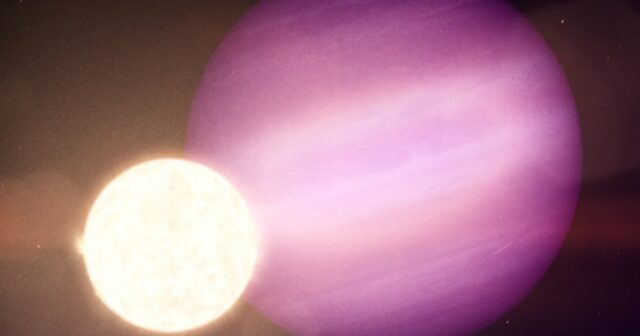The James Webb Space Telescope has investigated an exoplanet that’s super cool — literally. The huge planet, which is six times the mass of Jupiter, is the coldest exoplanet ever detected, with an average temperature of minus 87 degrees Celsius or minus 125 degrees Fahrenheit.
That makes the planet’s average temperatures around the same as the lowest temperature ever recorded on Earth, in Antarctica near the south pole during the dead of winter. So if you’re looking for a cozy place to visit for your holidays, even though Planet WD 1856+534 b is located just 81 light-years away, we wouldn’t recommend it.
The planet has an usually low temperature because of the star that it orbits. Even though the planet orbits close to its star, which would normally mean it has a high surface temperature, in this case the star it is orbiting is practically dead. The host star is a type called a white dwarf, which is the dense core that is left behind after a star has run out of fuel. When medium sized stars come to the ends of their lives, they shed off their outer layers and no longer create heat through fusion. However, there is still remaining heat in them, so they continue to cool over time.
White dwarfs are very common in our galaxy, so the fact that exoplanets can orbit them is important — it means that there could even be habitable worlds orbiting these dead stars.
The researchers from the University of Michigan, Ann Arbor, looking at this cold exoplanet weren’t sure if it would be possible for a planet to survive in this location. That’s because during the death of a star like this one, it puffs up to become a red giant before shrinking down to a core. If the planet had been in its current location during this time, it would have been engulfed by the red giant. Instead, the researchers think that the planet must have started off further out and then moved in closer to the star over time.
“WD 1856+534 b is now the first intact exoplanet confirmed within a white dwarf’s ‘forbidden zone,’ a region where planets would have been engulfed during the star’s red giant phase,” the researchers write. “Its presence provides direct evidence that planetary migration into close orbits — including the habitable zone — around white dwarfs is possible.”
The research will be published in The Astrophysical Journal Letters.
Please enable Javascript to view this content

















































